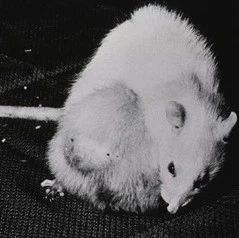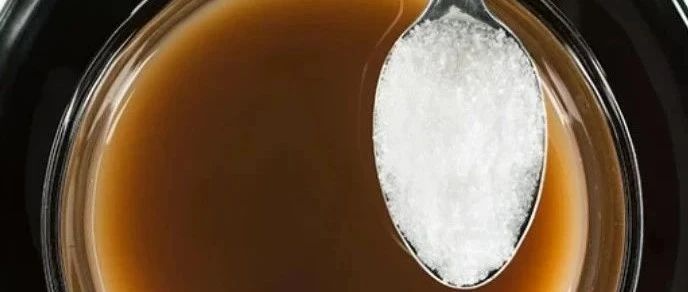科学家首次成功地将心脏病患者的健康皮肤细胞经过“重编程”后转变为健康的新的心脏肌肉细胞,并可同原有的心脏组织结合。

科学家使皮肤细胞发育成心脏肌肉组织
这项研究开启了利用心脏病患者自身人类诱导多能干细胞(hiPSC)修复受损心脏的展望。由于“重编程”的细胞可从患者自身获得,因而这可避免患者的免疫系统将这些细胞视为“外来物”。不过,研究人员也警示说, hiPSC在这方面的应用还存在许多的障碍需要克服,在开展临床实验前至少需要5到10年的时间进行实验研究。
在干细胞生物学及组织工程方面的最新进展让科研人员开始寻找用新细胞来修复受损心脏细胞的方法,不过一个主要的问题是缺少缺乏良好的人类心脏细胞源以及免疫系统的排斥问题。最近的一些研究表明,可以从年轻健康的人身上获取hiPSC并将这些细胞转变为心脏细胞。不过,还未有研究表明hiPSC也可以从年老患病的人中获取。并且,研究人员此前一直未能将产自hiPSC的心脏细胞与原有的心脏组织整合起来。
领导这项研究的以色列科学家Lior Gepstein教授说:“我们的研究中新颖且令人激动的地方就是我们发现可以从年老并患有晚期心脏病患者获取皮肤细胞并在实验室中将其转变为他自己的健康年轻的心脏细胞,年轻到如同他刚刚出生时的心脏细胞。”
Gepstein教授和同事们从两位老年(51岁和61岁)心脏病患者身上获取皮肤细胞,并往细胞核中转入3个转录因子(Sox2、Klf4及Oct4)以及注入丙戊酸,从而使细胞发生“重编程”。关键之处是,在这一用于“重编程”的混合物中不可还有转录因子c-Myc,因为该因子曾被用于产生干细胞但是被证实是一个致癌基因。
“要在临床上使用hiSPC的一个障碍就是细胞可能脱离控制进行发育而长成肿瘤,” Gepstein教授解释说。“这种潜在的风险可能来自多个因素,包括致瘤因子c-Myc,以及用于携带转录因子的病毒随机插入到细胞的DNA中,这个过程被称为插入致瘤。”
研究人员还使用到了另外一种策略,即利用病毒将“重编程”信息导入至细胞核中,并且这种病毒随后可以被移除从而避免插入致瘤。
这种方法所产生的hiPSC可以分化成为心脏肌肉细胞(心肌细胞),其效率和利用来自健康年轻人(在本研究中作为对照组)的hiPSC产生心肌细胞相同。研究人员然后将这些心肌细胞与原有的心脏组织共同培养使其发育为心脏肌肉组织。在24至48小时内,这些组织开始一起跳动。
最后,这些新的组织被移植到健康的小鼠心脏中,研究人员发现移植的组织开始与宿主组织建立连接。
“在这项研究中,我们首次证实可以建立心脏病患者自身的hiPSC,并诱导它们分化为可与宿主心脏组织整合的心脏肌肉细胞” Gepstein教授说道。
Gepstein教授表示,他们希望这种来自患者自身的hiPSC产生的心肌细胞在移植后不会被患者自己的免疫系统所排斥,是否发生排斥是研究的焦点。由于在目前阶段,这种人类细胞还只能移植到动物模型中,因此他们用免疫抑制药物处理实验动物,以确保移植细胞不会受到排斥。
在这项研究成果临床应用到治疗心脏病之前还需要开展大量的实验。Gepstein表示,在临床转化上还存在一些障碍,包括细胞数量的放大,提高细胞移植存活率、成熟、整合及再生潜能的移植策略,安全的操作程序以确保不会产生肿瘤以及心脏节律问题,进一步的动物实验,大量科研资金的投入等。“要解决这些问题至少需要5到10年的时间。”

 Derivation and cardiomyocyte differentiation of induced pluripotent stem cells from heart failure patients
Derivation and cardiomyocyte differentiation of induced pluripotent stem cells from heart failure patients
Limor Zwi-Dantsis, Irit Huber, Manhal Habib, Aaron Winterstern, Amira Gepstein, Gil Arbel and Lior Gepstein
Aims Myocardial cell replacement therapies are hampered by a paucity of sources for human cardiomyocytes and by the expected immune rejection of allogeneic cell grafts. The ability to derive patient-specific human-induced pluripotent stem cells (hiPSCs) may provide a solution to these challenges. We aimed to derive hiPSCs from heart failure (HF) patients, to induce their cardiomyocyte differentiation, to characterize the generated hiPSC-derived cardiomyocytes (hiPSC-CMs), and to evaluate their ability to integrate with pre-existing cardiac tissue.
Methods and results Dermal fibroblasts from two HF patients were reprogrammed by retroviral delivery of Oct4, Sox2, and Klf4 or by using an excisable polycistronic lentiviral vector. The resulting HF-hiPSCs displayed adequate reprogramming properties and could be induced to differentiate into cardiomyocytes with the same efficiency as control hiPSCs (derived from human foreskin fibroblasts). Gene expression and immunostaining studies confirmed the cardiomyocyte phenotype of the differentiating HF-hiPSC-CMs. Multi-electrode array recordings revealed the development of a functional cardiac syncytium and adequate chronotropic responses to adrenergic and cholinergic stimulation. Next, functional integration and synchronized electrical activities were demonstrated between hiPSC-CMs and neonatal rat cardiomyocytes in co-culture studies. Finally, in vivo transplantation studies in the rat heart revealed the ability of the HF-hiPSC-CMs to engraft, survive, and structurally integrate with host cardiomyocytes.
Conclusions Human-induced pluripotent stem cells can be established from patients with advanced heart failure and coaxed to differentiate into cardiomyocytes, which can integrate with host cardiac tissue. This novel source for patient-specific heart cells may bring a unique value to the emerging field of cardiac regenerative medicine.
文献链接:https://eurheartj.oxfordjournals.org/content/early/2012/05/03/eurheartj.ehs096.abstract






